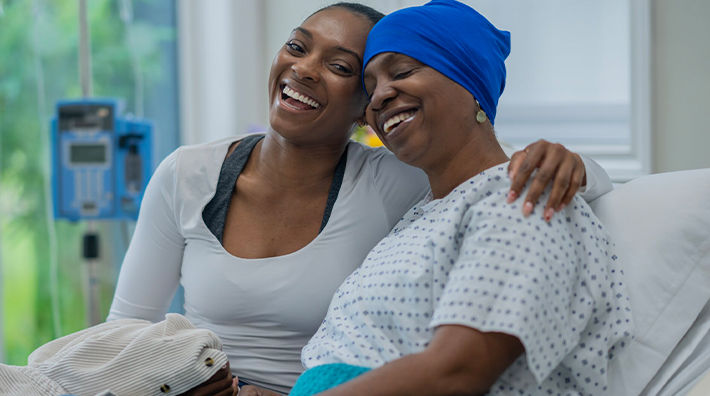Cancer Connections
Cancer News, Stories, and Conversations
Our team of experts brings you cancer-related news, features, and survivor stories.
Filtering by:
Cervical CancerHow Pelvic Floor Therapy Can Help During Cancer
Published on: June 17, 2025
Pelvic floor therapy can help strengthen muscles that may be affected by some cancers or cancer treatments. Find out more about pelvic floor therapy.
5 Questions About Cervical Dysplasia to Ask Your Doctor
Published on: February 5, 2025
If you get abnormal results from a cervical cancer screening test, you’ll want to ask your doctor about HPV, follow-up testing, monitoring, and treatment.
Cervical Cancer and Pregnancy: The Latest Research
Published on: January 21, 2025
Cervical cancer treatment can impact fertility. Learn more about what to ask your doctor about cervical cancer and pregnancy.
New Cervical Cancer Treatment Approach Offers Hope for Longer Survival
Published on: January 15, 2025
A study showed that a new cervical cancer treatment could help patients live longer. Learn what you should ask your doctor.
How to Prepare for a Colposcopy
Published on: September 10, 2024
Learn how to prepare for a colposcopy. Get step-by-step instructions for getting ready for the procedure and find out what to expect at your appointment.
Cancer Symptoms vs. Menopause Symptoms: Knowing the Key Differences
Published on: August 22, 2024
Wondering if cancer can be mistaken for menopause as you experience hot flashes, night sweats, and trouble sleeping? Learn about signs of cancer and symptoms of menopause.
ACS Updates Cervical Cancer Screening Guidelines to Start Screening at Age 25
Published on: July 30, 2020
The American Cancer Society (ACS) has updated its screening guidelines for cervical cancer. The new guidelines are for people with a cervix with an average risk of cervical cancer.
Cervical Cancer Survivor Relies on a Plan
Published on: April 28, 2020
When Coral Conway was diagnosed with stage IIIB cervical cancer, she felt overwhelmed. She was getting advice and information from many different sources. She had visited local doctors and hospitals in Florida and talked with professionals in her home country of Argentina.








